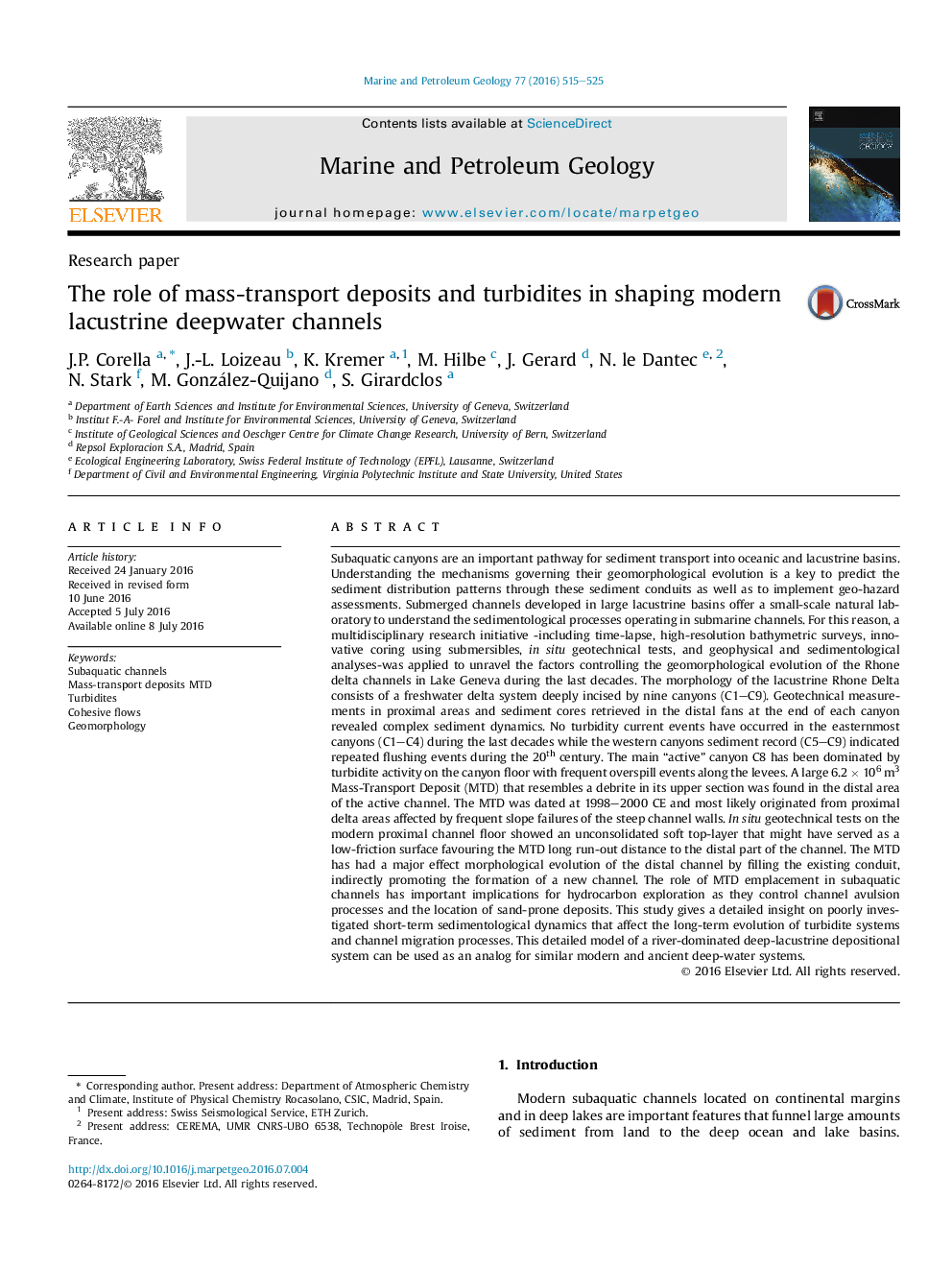| کد مقاله | کد نشریه | سال انتشار | مقاله انگلیسی | نسخه تمام متن |
|---|---|---|---|---|
| 6434576 | 1637150 | 2016 | 11 صفحه PDF | دانلود رایگان |
- We provide clastic depositional models for lacustrine channel-levee complexes.
- The thicknesses of unconsolidated surficial sediment layers reveal channel's activity.
- Mass-Transport Deposits (MTD) blocking distal channels influence avulsion processes.
- Short-lived MTDs control the long-term morphological evolution of deepwater channels.
Subaquatic canyons are an important pathway for sediment transport into oceanic and lacustrine basins. Understanding the mechanisms governing their geomorphological evolution is a key to predict the sediment distribution patterns through these sediment conduits as well as to implement geo-hazard assessments. Submerged channels developed in large lacustrine basins offer a small-scale natural laboratory to understand the sedimentological processes operating in submarine channels. For this reason, a multidisciplinary research initiative -including time-lapse, high-resolution bathymetric surveys, innovative coring using submersibles, in situ geotechnical tests, and geophysical and sedimentological analyses-was applied to unravel the factors controlling the geomorphological evolution of the Rhone delta channels in Lake Geneva during the last decades. The morphology of the lacustrine Rhone Delta consists of a freshwater delta system deeply incised by nine canyons (C1C9). Geotechnical measurements in proximal areas and sediment cores retrieved in the distal fans at the end of each canyon revealed complex sediment dynamics. No turbidity current events have occurred in the easternmost canyons (C1C4) during the last decades while the western canyons sediment record (C5C9) indicated repeated flushing events during the 20th century. The main “active” canyon C8 has been dominated by turbidite activity on the canyon floor with frequent overspill events along the levees. A large 6.2Â ÃÂ 106Â m3 Mass-Transport Deposit (MTD) that resembles a debrite in its upper section was found in the distal area of the active channel. The MTD was dated at 1998-2000 CE and most likely originated from proximal delta areas affected by frequent slope failures of the steep channel walls. In situ geotechnical tests on the modern proximal channel floor showed an unconsolidated soft top-layer that might have served as a low-friction surface favouring the MTD long run-out distance to the distal part of the channel. The MTD has had a major effect morphological evolution of the distal channel by filling the existing conduit, indirectly promoting the formation of a new channel. The role of MTD emplacement in subaquatic channels has important implications for hydrocarbon exploration as they control channel avulsion processes and the location of sand-prone deposits. This study gives a detailed insight on poorly investigated short-term sedimentological dynamics that affect the long-term evolution of turbidite systems and channel migration processes. This detailed model of a river-dominated deep-lacustrine depositional system can be used as an analog for similar modern and ancient deep-water systems.
Schematic depositional model displaying the main sedimentological processes in active (C8), intermittently active (C5) and inactive sublacustrine canyons. -Mass Transport Deposit (MTD); Sedimentation Rate (SR).283
Journal: Marine and Petroleum Geology - Volume 77, November 2016, Pages 515-525
